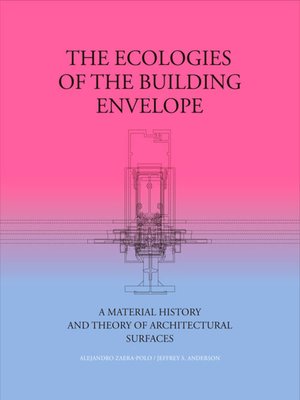The Ecologies of the Building Envelope
ebook ∣ A Material History and Theory of Architectural Surfaces
By Alejandro Zaera-Polo

Sign up to save your library
With an OverDrive account, you can save your favorite libraries for at-a-glance information about availability. Find out more about OverDrive accounts.
Find this title in Libby, the library reading app by OverDrive.



Search for a digital library with this title
Title found at these libraries:
| Loading... |
The Ecologies of the Envelope theorizes the building envelope as a literal embodiment of the social, political, technological, and economic contingencies which have become embedded within it over the last century, analyzing the historical lineages, heroes and villains that helped define the complex material ecologies we see within the envelope today.
While the façade is one of the most thoroughly theorized elements of architecture, it is also one of the most questioned since the end of the 19th century. Within the discipline of architecture, the traditional understanding of the façade focuses primarily on semiotic and compositional operations (such as proportional laws and linguistic codes), which are deployed on the building's surface. In contrast to this, our material and environmental theory of the envelope proposes that the exponential development of building technologies since the mid-19th century, coupled with new techniques of management and regulation, have diminished the compositional and ornamental capacities of the envelope in favor of material, quantitative, and technical performances. Rather than producing a stylistic analysis of the façade, we investigate the historical lineages of the performances, components, assembly types, and material entanglements that constitute the contemporary building envelope.
While the façade is one of the most thoroughly theorized elements of architecture, it is also one of the most questioned since the end of the 19th century. Within the discipline of architecture, the traditional understanding of the façade focuses primarily on semiotic and compositional operations (such as proportional laws and linguistic codes), which are deployed on the building's surface. In contrast to this, our material and environmental theory of the envelope proposes that the exponential development of building technologies since the mid-19th century, coupled with new techniques of management and regulation, have diminished the compositional and ornamental capacities of the envelope in favor of material, quantitative, and technical performances. Rather than producing a stylistic analysis of the façade, we investigate the historical lineages of the performances, components, assembly types, and material entanglements that constitute the contemporary building envelope.






